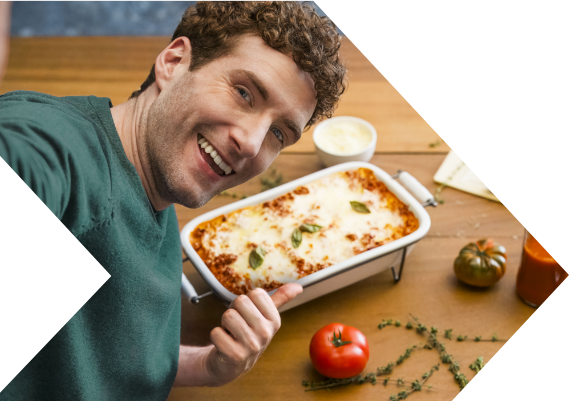For questions about financial assistance,
call 1-844-DUPIXENT, option 1 or
click to learn more
What is Eosinophilic Esophagitis (EoE)?
EoE: An Everyday Burden
Eosinophilic esophagitis
(EoE) is a chronic, progressive
condition that can damage the esophagus
over time.
People with EoE have inflammation that occurs when a large number
of
immune cells (including
eosinophils) build up in the esophagus. This buildup is associated with an
abnormal
response of the immune
system, known as Type 2 inflammation.
EoE SYMPTOMS TO WATCH FOR
EoE patients may experience some or all of the following symptoms:
Additional symptoms to watch for in children (ages 1 to 11 years):
for Caregivers
How Some EoE Patients May Cope:
These coping strategies may temporarily reduce EoE symptoms, but can hide the underlying source of EoE.
Do you find yourself doing any of the following?
Did You Know?
EoE is diagnosed using a procedure called an “endoscopy with biopsy.” A gastroenterologist (GI doctor) uses a thin tube to look into the esophagus and take tissue samples. The GI may diagnose EoE based on your symptoms, how the esophagus looks, and the presence of eosinophils in the tissue sample.
EoE symptoms can be vague and are often mistaken for GERD (gastroesophageal reflux disease) or a food allergy.
Find a Specialist Who Can
Treat EoE
It is important to consult a specialist like a gastroenterologist or allergist in order to diagnose and manage EoE. Learn more about the benefits of partnering with a specialist, and find one near you.
Find a Specialist

THE FIRST AND ONLY FDA-APPROVED TREATMENT OF ITS KIND FOR EoE
DUPIXENT is a breakthrough option that works differently. It targets an underlying inflammation that contributes to EoE symptoms.
LEARN HOW DUPIXENTTREATS EoE
FREQUENTLY ASKED QUESTIONS
- Difficulty swallowing
- Feeling of food being stuck
- Heartburn and/or chest pain
- Infants and toddlers might refuse food and lose weight or develop malnutrition
- Children could have trouble swallowing, may vomit, or have abdominal pain
- Teens and adults may have more difficulty swallowing as the esophagus narrows, causing impaction
A variety of treatments are used to help manage EoE, including:
Dietary Therapy
- EoE is most commonly caused by food allergens. Eliminating certain allergens that trigger a response may help manage EoE symptoms. Dietary strategies include elimination and elemental diets, which should always be done in conjunction with a medical professional.
Medical Therapy
- Proton Pump Inhibitors Proton pump inhibitors are a class of medications that reduce stomach acid production and have anti-inflammatory effects. While commonly used for EoE management, PPIs are not an FDA-approved treatment for EoE.
- Swallowed Topical Corticosteroids In EoE, topical steroids are swallowed slurries to act directly on the esophagus to help dampen inflammation.
- Biologics Biologics are specialty medicines that are processed in the body differently than oral or topical medicines. In order to be effective, and to work properly, most biologics are injectable medications. They target specific proteins that contribute to the disease and can help reduce EoE symptoms.
Endoscopic Therapy
- Esophageal Dilation This is an endoscopic procedure to mechanically widen the narrow parts of the esophagus, using a balloon or plastic tube.
Researchers are not certain about the exact cause of EoE. However, foods such as dairy, wheat, egg, soy, nuts, and seafood are recognized as the most common triggers for EoE.